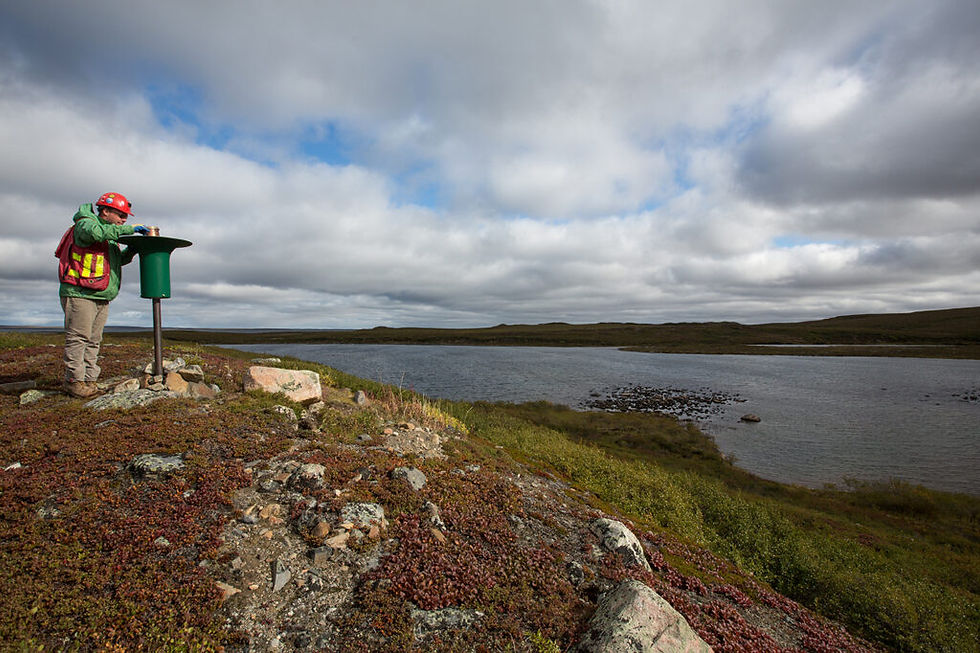From Risk to Regeneration: Why Gold Mining is Examining Its Relationship with Nature
- World Climate Foundation

- Oct 16
- 3 min read
By John Mulligan, Head of Sustainability Strategy, World Gold Council

Tree planting, Nicaragua. Image courtesy of Equinox Gold
Nature isn’t just a backdrop to economic activity, it’s the infrastructure that makes much of it possible. And as the sustainability agenda matures, biodiversity is no longer a peripheral or specialist issue. It’s foundational to climate resilience, food security, and long-term prosperity. If we care about stable societies, robust economies, and a future that isn’t bleak and brittle, then nature deserves our full attention.
At the World Gold Council (WGC), we’ve spent the past year or more expanding our lens, from a dedicated focus on climate change, to embrace a broader environmental perspective.
The context is challenging and the numbers are sobering: WWF reports a 73% collapse in wildlife populations since 1970. And this decline isn’t just a 'green' issue, it’s a business issue. Ecosystem services like clean water, pollination, and soil health underpin nearly half of global GDP. When nature suffers, so do jobs, communities, and markets.
So what does this mean for gold mining and how do we (at the WGC), seeking to inform and guide the industry, establish a better understanding of its position and impacts on these complex issues?
In response, we partnered with experts at S&P Global Sustainable1 to map the sector’s global nature risk profile, using a recently developed methodology aligned with global frameworks like the Kunming-Montreal Biodiversity Agreement and TNFD’s LEAP approach. The results, summarised in our recent report, Gold, Nature and Biodiversity: An Introduction, were a little surprising. Of 122 mines assessed across 30+ countries, 71% fell into ‘Moderately Low’ or ‘Low’ impact categories. Only 6% overlapped with Protected Areas, and just 4% with Key Biodiversity Areas.
That’s not to neglect or under-estimate the industry’s impacts – the report details many! – but it does challenge assumptions. Formal gold mining, as practiced by responsible operators, may be less ecologically harmful than many believe. And while the data excludes artisanal gold mining (where risks are often higher but not yet quantified), our findings give us a clearer baseline from which we can start to better measure and drive further progress.
Importantly, the report also showcases what good looks like. From the conservation of bats in Australia and Mexico to protecting buttercups in Finland, gold mining companies are already restoring habitats, protecting species, and collaborating with communities to establish sustainable practices (to the benefit of both the mine and the local population). These aren’t just compliance exercises, they’re proactive efforts to protect, repair and regenerate.
Our analysis, and the data and metrics it summarises, is not offered as an academic or communications exercise but as a tool that might help guide and reshape how gold mining companies and local operators disclose, manage, and reduce their nature-related impacts, while also developing solutions.
Ultimately, this is about moving beyond 'do no harm' toward 'do more good'. Because when ecosystems collapse, risks multiply, and resilience erodes. And the gold sector, like every sector, has both a responsibility and an opportunity to lead.
So next time you hear us – or others – talk about biodiversity, don’t tune out. Tune in. This is about securing the ultimate insurance policy for our shared future.
About the World Gold Council

The World Gold Council is the market development organisation for the gold industry. We work across the global value chain to stimulate and sustain demand for gold, provide industry leadership, and drive responsible and transparent practices. Through research, advocacy, and collaboration with investors, policymakers, and industry partners, we aim to strengthen gold’s role as a trusted asset and as a contributor to economic progress and sustainability worldwide.


